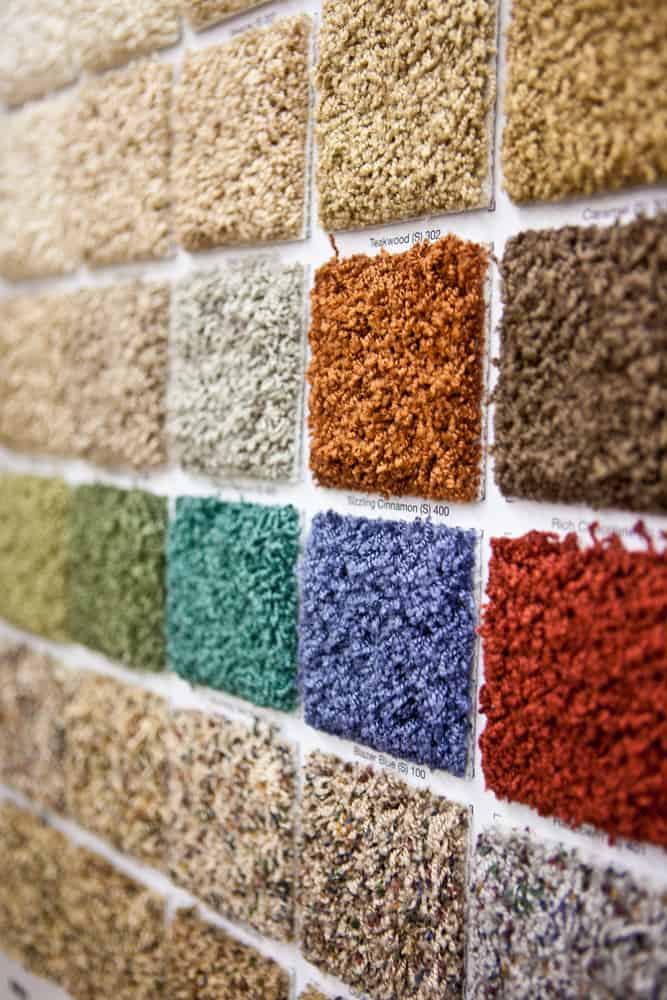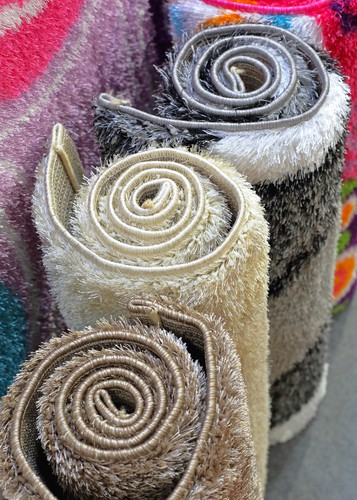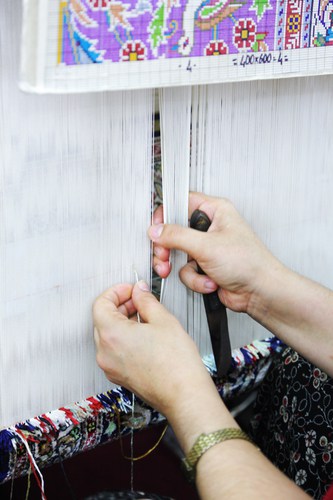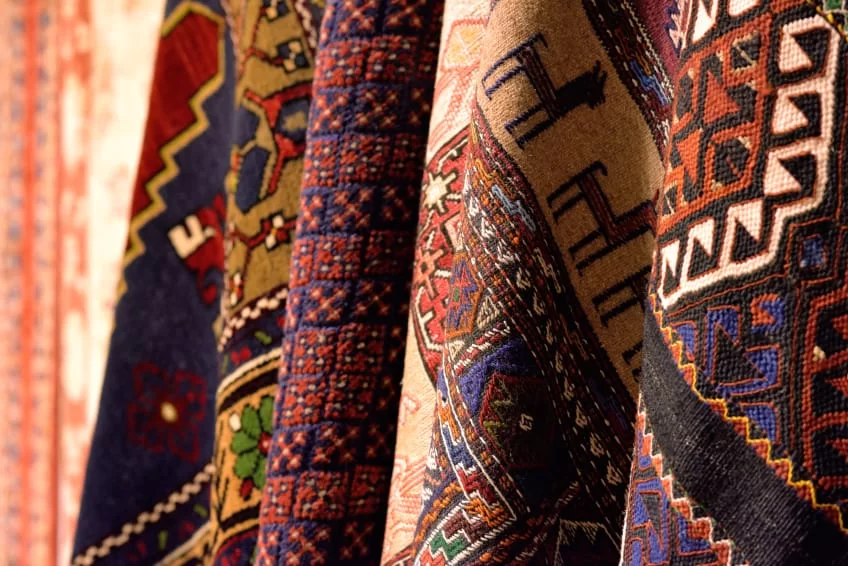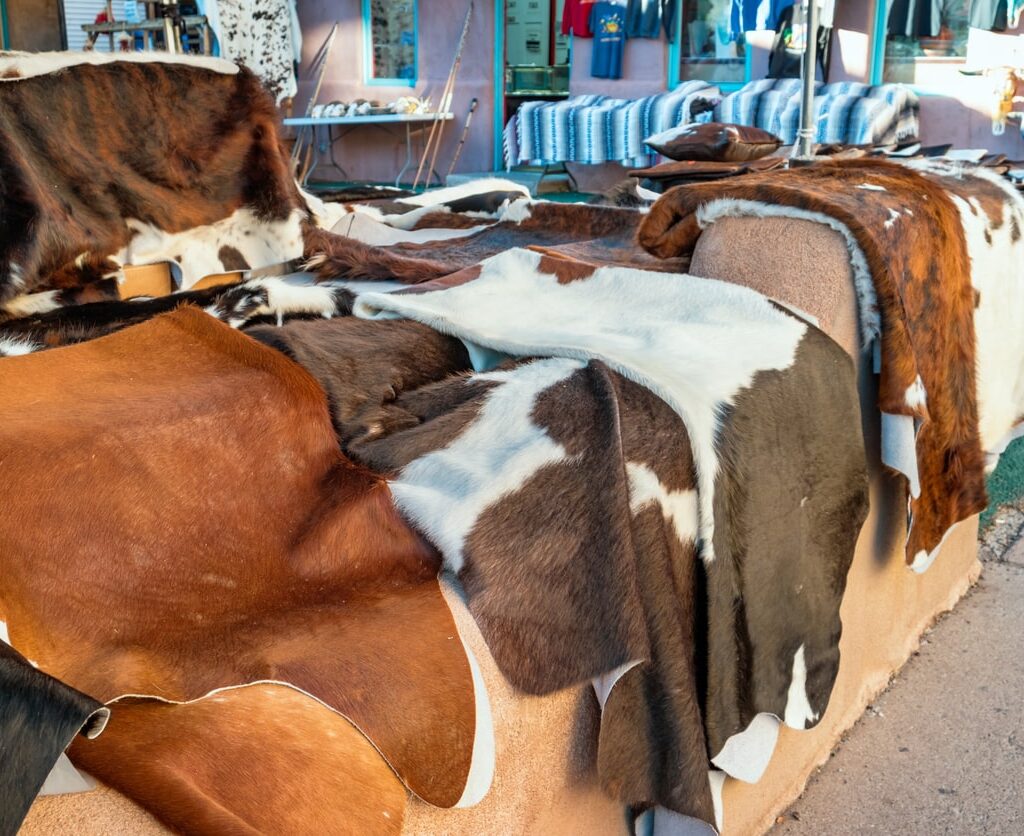Not long ago, if you wanted to buy a rug, you would go to a rug store and get one. Odds are, you would most likely go for a synthetic carpet and walk away with a wool one! Sounds familiar?
Wool is THE best fiber you could ask for a rug. I mean, it dyes vividly, it is strong, and always washes up beautifully. If you have one, you also know that it can last for MANY years. In fact, it is not unlikely to come across a hand-woven wool rug made before the 1800s still looking awesome! Even the more heavily chemically processed wool rugs from China would probably still last you for century, despite their lesser quality.
Therefore, your options back then would come down to: either (1) get back home with a not-so-great commodity wool rug or (2) a superb quality wool rug, like the ones sold at Rug Galleries. Still, you’d own a wool rug, so that was worth the investment!
Today, it is an entirely different ballgame and the current market is literally swarmed by synthetic area rugs that were designed to compete wool rugs by faking them. The synthetic fibers (acrylic, polyester, and polypropylene -aka olefin) are being used for that reason. However, if you put a synthetic rug next to a wool rug, it would be like having real wood right next to particle board.
“So, what is the big deal after all?”, some people might wonder. “We have a market with a plethora of cheap area rugs. This can’t be bad, can it?”
Wrong. This IS bad because the abundance of low-cost rugs only makes us end up with high-cost rugs. To prove my point, let’s consider some facts that most salesmen will never reveal:
Pros of Synthetic Rugs
They are Inexpensive
This is their big advantage; they come cheap. A synthetic polypropylene, acrylic, or polyester rug usually costs $5 per square foot. If you pay more than that, you should know that you are being ripped off. Given that these rugs have almost zero labor cost production-wise (machines make them all) and that their fibers are nothing more than plastic (poor quality, too), then you should pay next to nothing to get a synthetic rug.
Test a synthetic rug. Feel their back side. They feel like plastic and are hard to touch, right? This is because they ARE plastic.
Cons of Synthetic Rugs
1. You Need to Clean them More Often
Synthetic fibers are not constructed to hide grit and dust like wool fibers do. Wool rugs, on the other hand, have many pockets in their construction that allow them to look great and clean even when they are not. Acrylic, polyester, and olefin fibers are not only plastic but also smooth, solid strands. In other words, soil has no place to hide and sticks to the outside of the fibers. As a result, the rug wears off faster and easier than with a wool rug. This means that if you will need to clean a wool rug once a year or every other year, with a synthetic rug the frequency is much different. So, don’t be surprised if your synthetic area rug requires some cleaning a few months after it’s been lying on the floor. Truth be told, it won’t be long before its texture looks like a sponge and the colors fade.
Now, if you want to clean a synthetic rug, it can only be done using steam cleaning or what the pros refer to as Hot Water Extraction. Of course, it will need more aggressive cleaning solutions than wool rugs to surface clean it, provided there are no such thing as pet urine.
2. They Wear Down Faster
The majority of commercial buildings have installed synthetic wall-to-wall carpets, because they are cost-effective. However, if you take a closer look at the high foot traffic areas and the entryways, you will instantly see how much they have been worn down, even after just a couple of years of use. This is because they are plastic, which affects their longevity dramatically. Abrasion and synthetic rugs just don’t go together.
That aside, you will definitely find polypropylene rugs at home improvement stores. They carry these carpets, because they are cheap, but I would not recommend it for residential homes. They won’t be able to hold up to foot traffic. But, if you need to have synthetic fibers, better look for nylon. It is a much better option for wall-to-wall carpeting.
3. You will Need a New Vacuum to Clean them
Regular vacuums just won’t cut it. Synthetic rugs are scratchy and sticky, which makes cleaning a headache. Even for a professional rug cleaner, cleaning a synthetic rug is a pain, given that it is much more difficult to get grime, hair, and lint released from a synthetic carpet than any other. That, combined with the fact that synthetic carpets grab EVERYTHING makes cleaning quite challenging. If you own a synthetic shag rug that are a hype right now, you must know that getting them looking super clean us next to impossible. Even pros often find themselves literally pulling away (row by row) everything that has not been released through the cleaning method used.
Now, if you put all these together, 2+2=4. You can’t surface clean synthetic rugs with the tools available in the current market, and there come times that it just needs too much labor to get them clean; sometimes, the amount of effort required to clean a synthetic rug exceeds the money you paid to buy it.
Tip: If you own a shorter pile synthetic fiber carpet, you can use a lint roller to pick up stuff that your vacuum cleaner can’t. However, you will need to use A LOT of lint rollers to get the job done. But, it’s your call, anyway.
Of course, you could purchase a vacuum cleaner that effectively cleans synthetic area rugs, if you can afford a more expensive machine, such as a German made or a Sebo. Personally, I don’t think it is worth spending money on getting an expensive machine to clean a cheap carpet, which is also tough to the touch, making walking and rolling around it an unpleasant experience.
4. They are Wrapped Around Jute
You won’t like this one, especially of you have a not properly trained pet at home. You see, synthetic rugs have synthetic fibers. If that was all, you’d have absolutely no problem with pet odors whatsoever. As mentioned before, synthetic fibers have no pockets, so nothing can penetrate them, not even odors. In short, olefin fibers are pretty much stain proof. But, since olefin fibers are usually wrapped around jute, you have a big problem.
Jute is a straw-like plant fiber, distinguished for its high absorbency. This changes the game completely. If you are looking for the ULTIMATE odor-holding fibers, you just found them. ute fibers are the king of them all.
All that comes down to this: you can either have your synthetic rug properly and thoroughly cleaned, washed, and deodorized by a professional (and pay a little something extra for it), which means that you will have paid more money than what you have spent to buy the rug, or just get a new rug, crossing your fingers that your pet will not make urinating on your synthetic rug a regular habit (check out the Dangers from pet urine on rugs)
Once again, if the rug just looks dull and a bit dirty, you can surface clean it with chemicals (here you can find some carpet cleaning tricks that will help you get the fringe cleaned in no time!), equipment used for carpet cleaning, and some hot water. However, if you have odor issues, or even worse, problems deriving from flood exposure, then roll up your sleeves. The rug will most likely need to be FULLY washed to be clean, and deodorized. Sounds like a lot of extra costs weighing your pockets down out of the blue. Replacing it with another one, in this case, might be more cost-effective and easier than anything else.
With hand-woven rugs, on the other hand, odor removing is not a serious matter. A proper wash is more than enough to remove every contaminant from flood exposure or pet urine from the cotton or wool fibers.
5. They are NOT Sustainable Resources
Synthetic rugs are petroleum products (we have already mentioned that their fibers are plastic). So, if you are a fan of renewable resources (be it for health, environmental, or even political reasons), you might not want to own a synthetic rug.
6. You can Never Have a Synthetic Rug Looking Awesome After it’s Been Cleaned
Truth be told, a synthetic rug will probably never wow you after it has been cleaned. I mean, if you take a look at before- and after- pictures of synthetic rugs, the wow factor is low. They will look dirty either way. If you own a wool carpet, though, I am sure you can tell the difference between a dirty and a clean one.
Note: Most of the time, consumers buy rugs without knowing that they are synthetic. They usually pay good money to have them cleaned and end up with rugs that don’t look so great after a good cleaning. So, be aware and always ask the salesperson whether you are going to buy a synthetic rug or not.
Decorative Rugs vs. Investment Rugs
The previous generation of rug gallery owners would tell us: They are two groups of carpets, the decorative and investment rugs. Today, this means: Are you going to buy an enjoyable or a disposable rug?
It is always fascinating to know the story behind a rug, which defines its quality and value. For example, in rug galleries of the past, you could see semi-antique and antique hand-woven works of art that took months (some even years) to weave. You could actually feel the passion and love put to them, to every strand.
Unfortunately, today’s market is full of bad products, not only synthetic rugs, but also cheap wool tufted rugs with the low-quality latex that is holding them together, and many more. Rugs that we would call disposable. No wonder the landfills are beginning to get packed with such rugs the last few years.
Yes, the big issue arising from all this is that not many people can afford to buy a wool rug, considering that they are believed to be expensive. They are. But, there are also new, good quality woven wool rugs that you can get at super affordable prices that won’t set you back financially. Now, THESE are the rugs I would refer to as enjoyable.
That aside, there is a plethora of hand-woven wool rugs out there available second hand. Again, they come at much lower prices that you would have expected.
At the end of the day, here are the two dilemmas offered: (1) get a rug that you could care less regarding its look because you are using it, say, to cover the floor than anything else, or (2) buy a wool tufted rug if you want something that can hide dirt better than polypropylene. If you just want a decorative addition to your home, something you don’t want to worry about, a synthetic rug is an excellent option. You know that you will need to replace it in a few years so everything is OK. There are homeowners with both synthetic and tufted wool rugs, with the first ones used as door entry rugs so that they and their guests can wipe off their feet on plastic and not on hand crafted rugs (although wool woven rugs can handle high traffic without any problems).
Now, you are ready to make a more informed decision next time you want to buy a new rug for your home or office.
You might also want to have a look at How to Protect your precious wool rug from bugs and moths, and information about How often you Should Clean your Area rugs. Want more Carpet cleaning hacks to make your life easier? We have that, too!

